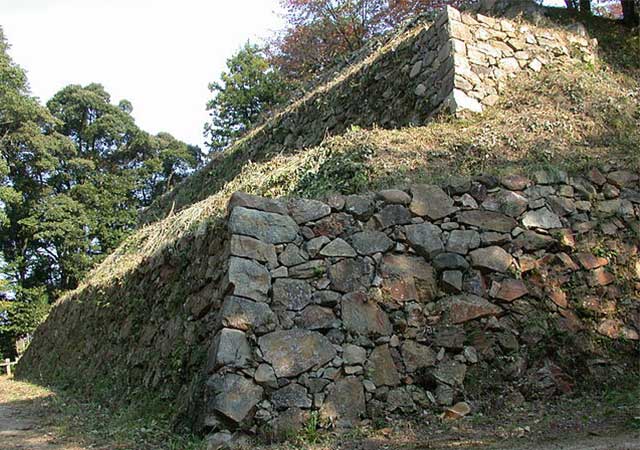
Mori Motonari (1497–1571), head of the powerful Mori clan, was one of the most influential daimyo in the Chugoku region, located in western Honshu. During the turbulent and violent Sengoku Jidai period, he waged continuous wars in an effort to expand his domain and strengthen his clan's power.
As early as 1543, Motonari had already attempted to seize Gassan-Toda Castle from his neighbor, Amago Haruhisa, but that attempt ended in failure. However, in 1561, Haruhisa died, and two years later, Motonari launched a new military campaign with the aim of conquering Izumo Province.
In order to isolate the enemy's main fortress, Motonari began to systematically capture the remote fortifications belonging to the Amago clan. Among them, the most significant was Shiraka Castle, the largest of the satellite castles (shijo), which was of key importance for defending the approaches to Gassan-Toda. In the fall of 1563, Motonari began his siege. The new head of the Amago clan, Yoshihisa, sent troops to help the besieged, but they were intercepted by Mori's army and defeated. The siege of Shirakawa lasted 70 days and ended in surrender after the besiegers managed to cut off the castle's water supply. The commander of the garrison, Matsuda Michihisa, chose to commit suicide rather than surrender to the enemy.
In the spring of 1564, Motonari approached the walls of Gassan-Toda. This citadel, which belonged to the Amago clan, was one of the five largest mountain castles of its time. Although Gassan-Toda was a yamajiro (mountain castle), it had a highly developed system of defensive structures. In addition to the traditional three courtyards—defensive lines located at the top of Mount Gassan—the fortress had other courtyards that descended in terraces down to the Toda River (now known as Iinashi) and its tributary.
The first attempt to storm the castle, protected by natural conditions and powerful fortifications, was unsuccessful. Mori's army suffered losses, and Motonari was forced to retreat to regroup his forces. In the summer of the same year, he returned to Gassan-Toda with an army of 25,000 samurai. At that time, the castle garrison numbered about 10,000 soldiers. This time, Motonari abandoned the idea of a direct assault and decided to wear down the fortress.
A long blockade began. Motonari issued an order not to accept defectors, thereby contributing to the rapid depletion of food supplies among the besieged. At the same time, he carried out a cunning political maneuver, using the well-known strategy of “killing with someone else's knife.” The head of the Amago clan, Yoshihisa, had a loyal vassal, Uyamahisakane, who was known as a skilled strategist and wise advisor. Motonaori, with the help of his agents, spread rumors among Yoshihisa's people that Hisakane was allegedly preparing to betray him. The false accusations achieved their goal — Yoshihisa believed them and ordered the execution of his valuable assistant. This act seriously undermined the morale of the castle's defenders.
Ultimately, when Motonari lifted the ban on accepting defectors, thousands of exhausted and half-starved Amago warriors abandoned their positions and fled the fortress. By the beginning of winter 1565, the situation inside the castle had become hopeless, and Yoshihisa decided to surrender. To the surprise of many of his contemporaries, Motonari showed mercy and spared the life of his defeated enemy. Yoshihisa was allowed to become a monk and go into exile at Enmyoji Temple in Aki Province.
See also
-
The Siege of Hara Castle

The Shimabara Rebellion of 1637–1638, which culminated in the siege of Hara Castle, was the last major uprising of the Edo period and had serious political consequences.
-
Battle of Tennoji
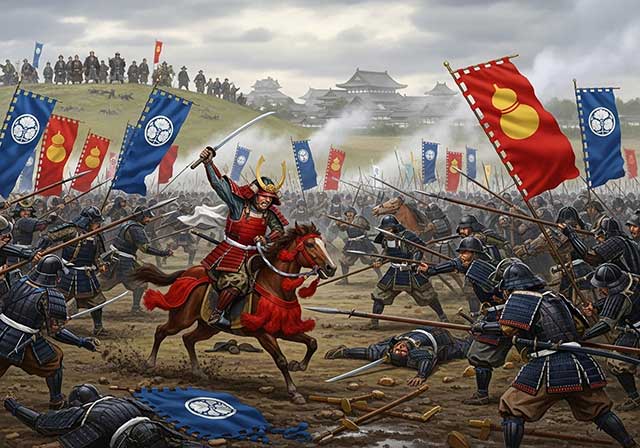
The confrontation between Tokugawa Ieyasu and Toyotomi Hideyori during the “Osaka Winter Campaign” ended with the signing of a peace treaty. On January 22, 1615, the day after the treaty was signed, Ieyasu pretended to disband his army. In reality, this meant that the Shimazu forces withdrew to the nearest port. On the same day, almost the entire Tokugawa army began filling in the outer moat.
-
Siege of Shuri Castle
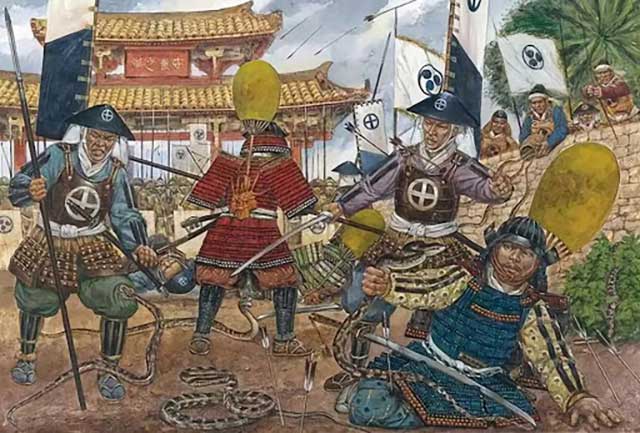
The Ryukyu Kingdom was established in 1429 on Okinawa, the largest island of the Ryukyu (Nansei) archipelago, as a result of the military unification of three rival kingdoms. In the following years, the state's control spread to all the islands of the archipelago.
-
The Siege of Fushimi Castle
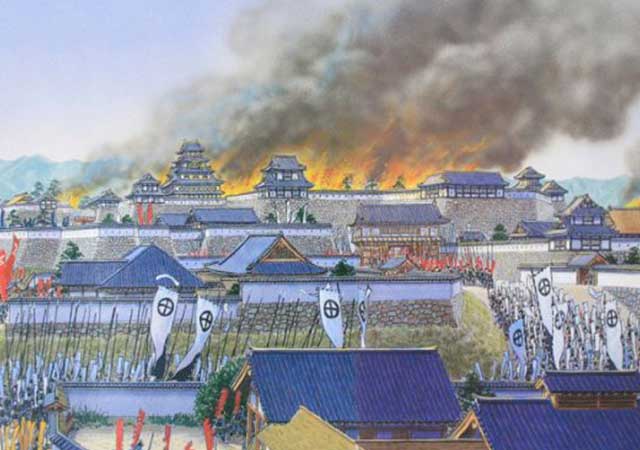
Fushimi can perhaps be considered one of the most “unfortunate” castles of the Sengoku Jidai period. The original castle was built by Toyotomi Hideyoshi in the southeast of Kyoto in 1594 as his residence in the imperial city.
-
The Siege of Otsu Castle
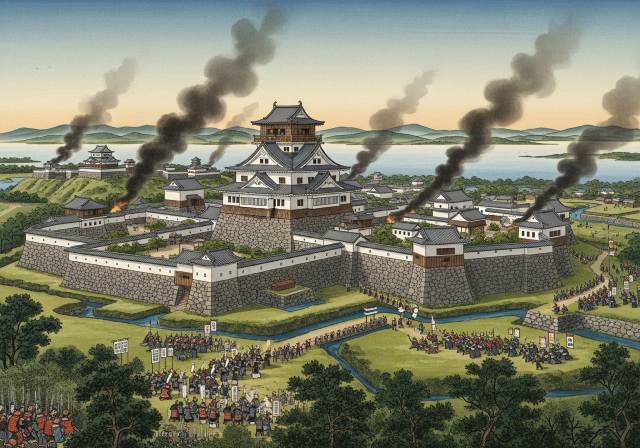
The siege of Otsu Castle was part of the Sekigahara campaign, during which the so-called Eastern Coalition, led by Tokugawa Ieyasu, fought against the Western Coalition, led by Ishida Mitsunari. Otsu Castle was built in 1586 by order of Toyotomi Hideyoshi near the capital Kyoto, on the site of the dismantled Sakamoto Castle. It belonged to the type of “water castles” — mizujō — as one side of it faced Japan's largest lake, Lake Biwa, and it was surrounded by a system of moats filled with lake water, which made the fortress resemble an island.
-
The Siege of Shiroishi Castle
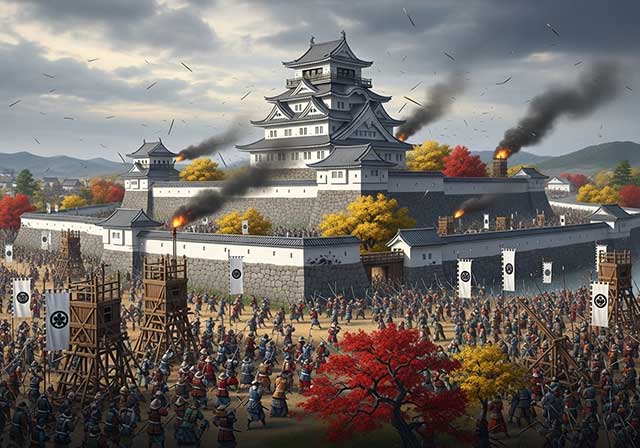
The siege of Shiroishi Castle was part of the Sekigahara campaign and took place several months before the decisive battle of Sekigahara. The daimyo of Aizu Province, Uesugi Kagekatsu, posed a serious threat to Tokugawa Ieyasu's plans to defeat the Western Coalition, and Ieyasu decided to curb his actions with the help of his northern vassals. To this end, he ordered Date Masamune to invade the province of Aizu and capture Shiroishi Castle.
-
The Second Siege of Jinju Castle
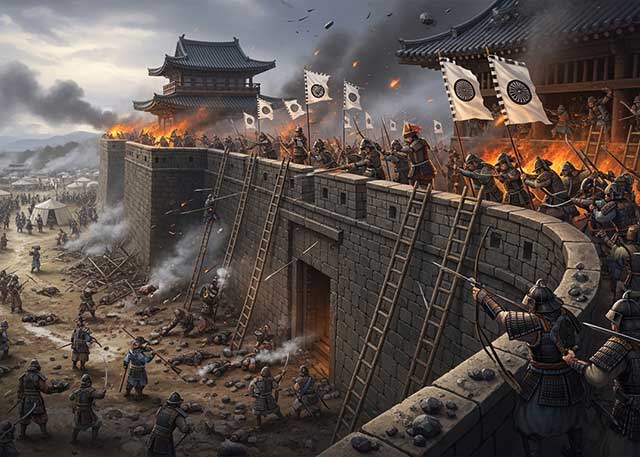
During the two Korean campaigns of the 16th century, the Japanese repeatedly had to capture enemy fortresses and defend occupied or constructed fortifications from the combined Korean and Chinese forces. Among all the operations of that time, the second siege of Jinju Castle is considered the most interesting from the point of view of siege warfare.
-
The Siege of Takamatsu Castle
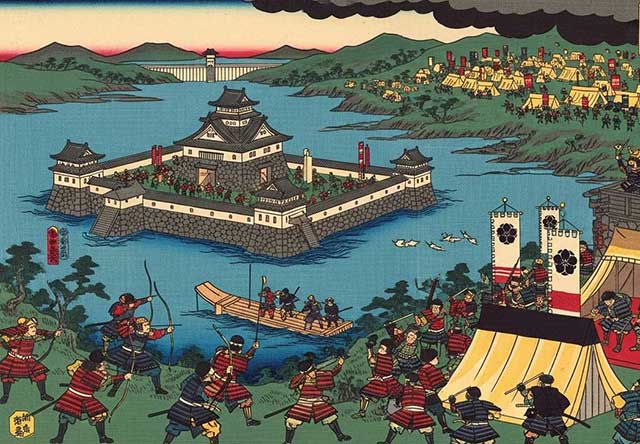
The siege of Takamatsu Castle in Bitchu Province is considered the first mizuzeme, or “water siege,” in Japanese history. Until then, such an original tactic had never been used.

